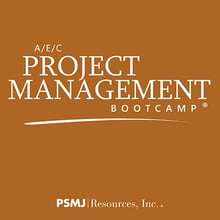 Often a requirement of project planning, Gantt charts and CPM schedules are highly detailed and graphically impressive. However, they have two significant weaknesses.
Often a requirement of project planning, Gantt charts and CPM schedules are highly detailed and graphically impressive. However, they have two significant weaknesses.
First, many clients (and if they’re being honest, some of your teammates too) don’t really understand them. And second, they assume flawless predictability of too many unknown or uncontrollable variables.
Even if you’re using hearty scheduling software, such as MS Project or FastTrack, both problems still exist. And it’s the juggling and unpredictability of so many variables that keeps PMs awake at night and in a constant state of stress. Schedules are easy to plan. But they seem nearly impossible to implement and maintain.
So, admitting that no project schedule is perfect, and is likely to require adjustments along the way, here’s a few rules for maintaining a comfortable schedule and keeping your client happy.
Keep your eye on everything
Every variable and factor that you know might affect the schedule needs to be watched and tracked. Change orders, subcontrator work, quality control, and the client’s internal schedule are just a few examples. You’re looking for red flags.
Communicate with your team
Your team includes internal members as well as subcontractors, and they require regular communication about project process. Weekly or bi-weekly meetings are encouraged. You should be transparent about the schedule – its milestones, challenges, and weak links.
Communicate with your client
It should go without saying that you owe your client regular (weekly or monthly) project status reports. These reports must include information about the project schedule, and if your schedule is off track, it’s better to share bad news with your client early on than when things get seriously out of whack. No one likes surprises.
If you need to adjust the schedule, do it as early into the project as possible, and make sure that you involve your client in the process. Your client has just as many variables to deal with and stakeholders to consider as you do. Revising your schedule should be a collaborative effort.
About the Author: David Whitemyer, AIA, is a licensed architect and project manager at a Boston-area design firm.
 Architecture, engineering, and construction firms have plenty of ways to spend money, but only one way to make it...through projects. Your Project Managers are the gatekeepers to the firm's profits and long-term health. A wise investment in project management is absolutely a wise investment in improved profits, improved client satisfaction, and improved value. Unlike a generic project management training seminar, PSMJ's AEC Project Management Bootcamp is focused on real-world A/E/C project management, and is delivered by proven A/E/C project management experts.
Architecture, engineering, and construction firms have plenty of ways to spend money, but only one way to make it...through projects. Your Project Managers are the gatekeepers to the firm's profits and long-term health. A wise investment in project management is absolutely a wise investment in improved profits, improved client satisfaction, and improved value. Unlike a generic project management training seminar, PSMJ's AEC Project Management Bootcamp is focused on real-world A/E/C project management, and is delivered by proven A/E/C project management experts.
You also might be interested in:
10 Things Every Project Manager Must Know
5 Reasons to Turn Down a Project
How Firms Keep Projects Under Budget and Clients Happy



